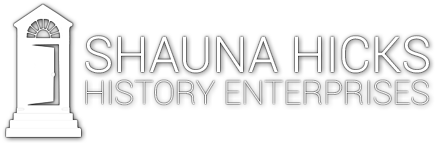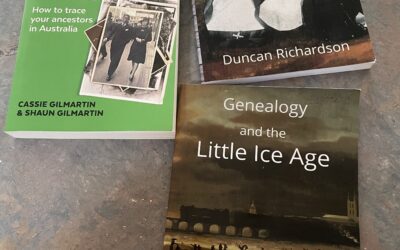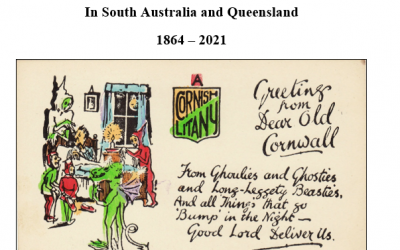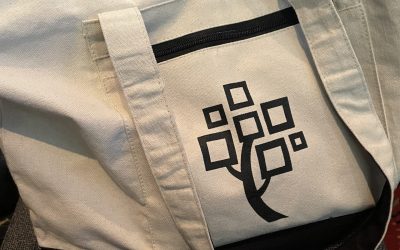This blog challenge is to stimulate my own genealogy blogging efforts in 2014 by focussing on a different kind of genealogical record each week. I wanted a challenge that reflected my own archival background as well as my own genealogy interests and there are probably lots of other records that I could have included. The challenge has an Australian focus but most of these records will be found just about anywhere in the genealogy world.
The 52 different types of genealogical records I finally decided on are listed in no particular order (each week will be a random surprise). Anyone is welcome to do all or part of this blogging challenge. Let me know if you are participating and I will put a link to your post under each week’s challenge. Happy researching Shauna Hicks
Week 2 Internal Migration
Technically internal migration is not a category of records but it is such an important part of our family history research as our ancestors moved around a lot more than we think. Many did not just come to Australia and stay in the one place. We can discover their movements from a number of different sources as my own examples will demonstrate.
Having started researching my family history back in the 1970s when certificates were a lot cheaper (although I was not earning that much either back then) I made it a practice to buy the certificates of the siblings of my direct ancestors if I was having trouble tracing the family. This practice paid off for a number of my families.
Adam Johnston and Maria Jeffers married in Brisbane in 1864 and had nine children. My own direct ancestor was their seventh child Elizabeth Johnston who was born at South Pine, north of Brisbane. I had trouble locating the family in that area so I started buying the other children’s birth certificates. The first four children James, Sarah Jane, William and Selina were all born in Brisbane and my big surprise came when I bought the next certificate. Fifth child, daughter Margaret was born in Stanthorpe down near the New South Wales border. Another daughter Margaret was also born in Stanthorpe and that sent me looking for a death certificate for the first Margaret. My ancestor Elizabeth was their next child born at South Pine so by then they had left Stanthorpe. The eighth child Maria was also born at South Pine while the ninth and last child Adam John was born at Sherwood on the other side of Brisbane.
What prompted their move and stay in Stanthorpe for at least four years? This is where occupation on a certificate comes in handy. Adam Johnston had become a tin miner and was trying his luck on the tin fields of Stanthorpe in the 1870s. Had I not purchased all of the children’s birth certificates this period in their lives would have remained unknown (to me) as I have found no other evidence of it elsewhere.
It is a similar story with my Price family. Thomas and Elizabeth Price arrived as newlyweds in Sydney in 1878 and obviously they were not sure where they wanted to settle. They had ten children (big families help when tracing ancestors movements) and the children were as follows: Solomon was born at Caleula, William at Orange, Thomas at Parramatta, Elizabeth Ann at Kiama, Clara at Broughton Creek, Henry at Nattai (all more or less south of Sydney), then George was born at Bundanba (now Bundamba) west of Brisbane, a still born child was born in Bundaberg and the last two Herbert Leslie and Annie Lewis were born in Charters Towers in far north Queensland.
In just under twenty years Thomas and Elizabeth Price had moved up and down the east coast of Australia and without those birth certificates I would not have known about all the family moves.
My final example is my Trevaskis family. James Henry Trevaskis arrived in Moonta, South Australia with his wife Ann and three children. After his wife died, he married my direct ancestor Elizabeth Rosewarne and they had my great grandmother Dorcas Trevaskis in Moonta. Their next son John Trevaskis was born in Copperfield, Queensland and I would love to know how they made that incredible trip from South Australia, presumably through western New South Wales and up through Queensland. Dorcas married in Charters Towers and died in Brisbane but the wording ‘late of Charters Towers’ on her tombstone makes the link back there. So sometimes there are also clues to internal migration in records such as funeral notices, obituaries and monumental inscriptions.
One way I track these internal movements in a family is to use a time chart where I put all known dates and places for an individual (or a family) in a timeline and often this will help me see a discrepancy or that I am missing a key piece of information. Are you really sure that your ancestors did not move around after they arrived in Australia?
Also participating in this blog challenge:
Sharon (Tree of Me blog) Internal Migration
Judy Webster Internal Migration
Cassmob Internal Migration





I totally agree that all family historians should ask themselves that question, ‘Are you really sure that your ancestors did not move around after they arrived in Australia?’ Hospital admission registers show that many people did move, often just for a short time. This is obvious from details in hospital admission registers, many of which I have indexed. (Thousands of patients’ names are on my Web site). For example, many people from the Victorian goldfields spent a few months (or years) at Croydon or Cooktown in North Queensland when gold was discovered there.
Mine all lived in Victoria after arrival but there was some movement, particularly in one branch which moved between Melbourne and various country areas. Occupations, directories and land records are also useful for tracking them.
One branch of my family – 1840s to 1860s – moved Fromstein Sydney – Richmond river – Victoria – Richmond river – Victoria -Richmond river. All confirmed by birth & marriage certificates
Thanks Judy, Maureen and Helen for your tips. Hospital admission registers, occupations, directories and land records are all on my list and you will be seeing more about those records as this blog challenge moves through 2014. It is good to remember that if one source does not turn them up, there are lots of other records to try!
Shauna, I enjoyed your latest post for your challenge. It is nice to think outside the box. Although it has not lead to many discoveries some of the newspaper births, deaths and marriage notices for my ancestors have messages to papers in other towns to please copy. I am assuming this is because they would like people in these other towns to know the news. This giving me another clue to follow up when there as been internal migration. I also use voter registration information.Fran
Shauna
I hope by replying that I will join in this challenge. I will attempt to start today.
Sharon
My week 2 (Internal Migration) post is at http://uk-australia.blogspot.com.au/2014/01/internal-migration-52-weeks-of.html.
my long-wided reply to this topic is here
http://cassmob.wordpress.com/2014/01/25/52-weeks-of-genealogy-records-internal-migration/
Thanks Shauna…I have always wondered why Adam & Maria went to Stanthorpe. I can imagine that trip with all the children in tow.
Thanks for all your little gems of knowledge.
Kind regards,
David
Hi David That photo album I have been trying to identify is definitely a Johnston/Gunderson album. When I get back from the genealogy cruise I am going to spend a whole day on trying to identify individuals as I have a group photo which was identified for me by Dorrie Manville back in the 80s which should help me. Stay tuned.
That’s great news Shauna…will be wonderful to put faces to names. Looking forward to an update and perhaps some scanned copies.
Kind regards,
David